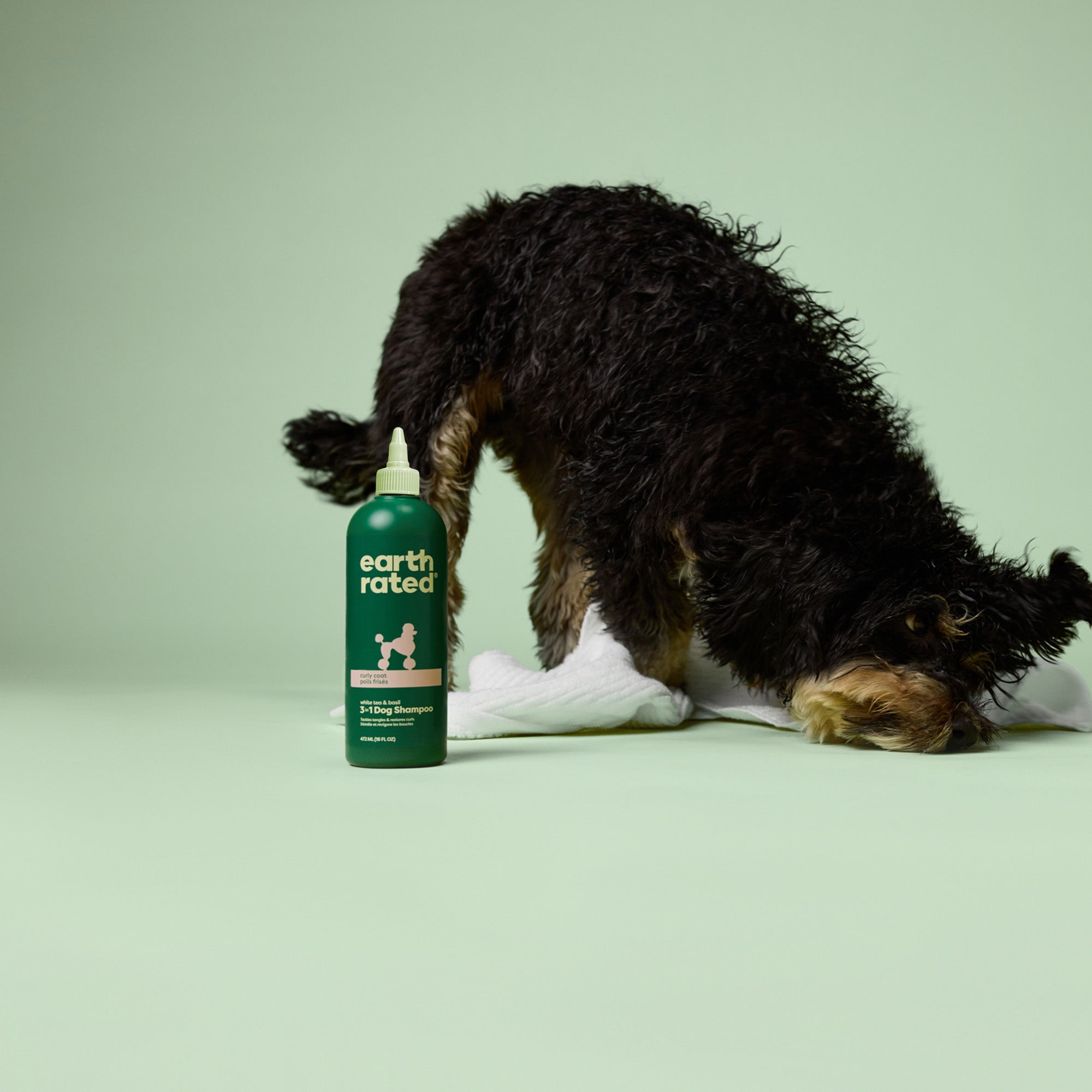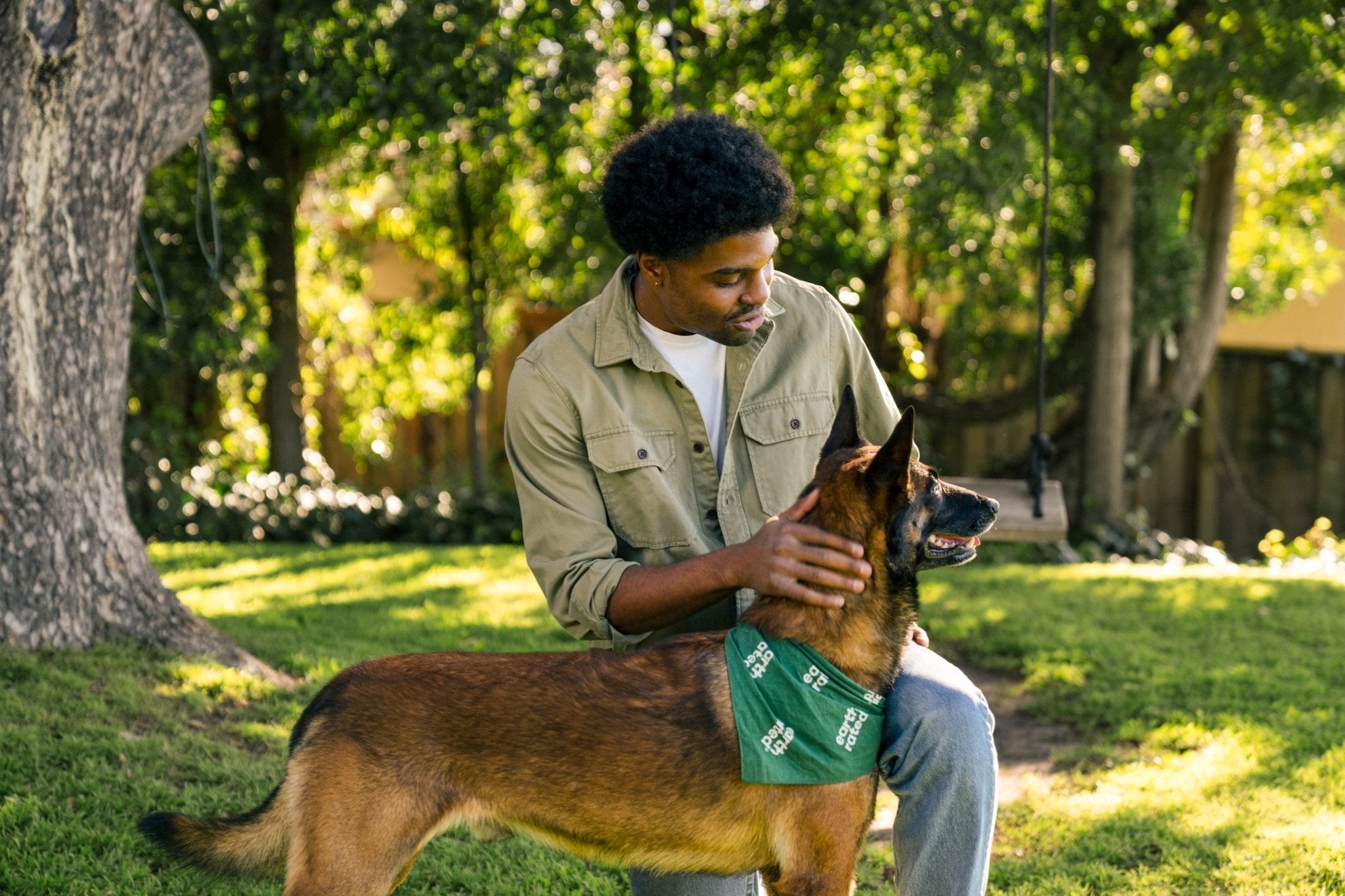If you’re thinking about getting a dog but have allergies, you’re likely wondering are hypoallergenic dogs real? The truth is, a truly hypoallergenic dog doesn’t exist. Some pups may be less likely to turn your sinuses into a disaster zone, but no dog is completely allergen-free.
Myriam Doré, an animal health technician notes, “The biggest misconception about hypoallergenic dogs is that they are totally allergy-free.”
Below we’ll break down what “hypoallergenic” really means, which breeds are easiest on allergies, and how to keep your home (and your pup) as allergen-free as possible.
What Does “Hypoallergenic” Mean?
“The term “hypoallergenic” is often misinterpreted to mean allergen-free, when in reality it means less likely to trigger an allergic reaction,” explains Myriam.
A lot of people assume that hypoallergenic dogs won’t upset their allergies at all. But that isn’t a guarantee. Typically, you won’t know if you’re allergic to a particular dog or not until you’ve spent some time with them.
Allergic reactions are caused by proteins found in a dog’s:
- Hair
- Dander (dead skin cells)
- Saliva
- Urine
Dogs produce different types of allergenic proteins and not all allergy sufferers are upset by the same protein.
Dog allergies happen when the immune system overreacts to certain proteins, treating them like invaders. This can lead to sneezing, itchy eyes, or even asthma symptoms.
Are Hypoallergenic Dogs Real? The Science Behind Pet Allergies
No, hypoallergenic dogs are not real because all dog breeds produce allergenic proteins. These proteins are found in dog saliva, dander, and urine, meaning that even dogs that shed less fur can still trigger an allergic response.
The Journal of Allergy and Clinical Immunology found that many dog breeds marketed as “hypoallergenic” actually had higher levels of allergens in their hair and coat compared to other breeds. The levels of allergens in the air was also measured and showed no significant difference between homes with hypoallergenic dogs and non-hypoallergenic dogs.
Another study measured the concentration of allergens found in dust samples of homes with hypoallergenic and non-hypoallergenic dogs. This study also found no significant difference between the amount of allergens shed by a hypoallergenic dog compared to a non-hypoallergenic dog.
“Many people are unaware that all dogs, regardless of breed, produce allergens to some degree,” agrees Myriam. “In-house breeders and pet shops often use the term “hypoallergenic” as a tool to lure pet allergy sufferers into getting a dog.”

Factors That Affect Allergen Levels in Dogs
Shedding & Dander Production
It was thought that dogs who shed less fur would shed fewer allergens. But, more and more scientific studies have found this not to be true. In fact, some homes with curly-coated Poodles had the same levels of allergens as high-shedding breeds like Labradors.
Dogs that shed higher levels of dead skin cells (dander) are more likely to cause allergies due to the increased release of allergenic proteins into the air. But, the concentration of allergens shed is individual to the dog and isn’t based on breed.
Grooming & Hygiene
One way you can control the amount of allergens in your home is through regular grooming. Brushing, bathing, and wiping down fur helps remove dander before it takes over your home (or your sinuses).
For best results, stick to pet-safe grooming practices. Use hypoallergenic shampoos, gentle wipes (like Earth Rated’s dog wipes), and frequent brushing to keep allergens in check.
Be careful not to wash your dog too much, though. This can cause dry skin, which may lead to even more allergens being shed. Instead, use wipes instead of full baths.
It’s best if someone who isn’t sensitive to dog allergens can do the grooming. If not, perform the grooming outside or in a well-ventilated area so you aren’t just moving allergens from your pup to the furniture.
Home Environment & Allergen Management
Homes that aren’t cleaned as often may have higher levels of allergens floating around. Air purifiers with HEPA filters, frequent vacuuming (especially with a pet-specific vacuum), and washing your dog’s bedding can all help with lowering allergens.
You can also reduce allergen-holding materials in your home. For instance, carpets tend to hold onto allergens more than hardwood. Consider replacing fabric curtains and similar decoratives, too. The fewer things you have to clean, the better.
Don’t forget to use pet-safe cleaning products while cleaning your home. Cleaning products that aren’t pet-friendly can cause contact allergies in dogs.
A cleaner home means fewer allergens floating around causing irritation.
Breeds Commonly Considered “Hypoallergenic”
As we’ve seen, no dog is truly hypoallergenic but there are some breeds commonly labeled as hypoallergenic dog breeds including:
- Poodles
- Bichon Frise
- Portuguese Water Dogs
- Schnauzers
- Airedale Terriers
But, these breeds are far from allergen-free. Myriam explains, “Many people think that if a dog is labeled as “hypoallergenic,” it won't cause any allergic reactions, which is simply not true.
Allergy production is very individual in the dog world, even in the same breed. There are all sorts of different proteins produced by dogs, and those with dog allergies often aren’t allergic to all of them. You may need to ask your doctor to perform a test for each of the canine proteins so that you know exactly which ones you’re allergic to.
When it comes to selecting a dog for a household with allergy sufferers, you cannot really know if a particular dog will cause allergy symptoms without trying. You’ll need to work with a breeder who is willing to send you allergen-rich samples for you to try at home or spend significant time with the puppy in question.
If you’ve never adopted a dog before, the Arkansas Allergy and Asthma Clinic recommends getting a formal allergy test done. Performing an “informal” one by hanging out with some dogs at your local animal shelter can also help.
How to Live Comfortably With a Dog If You Have Allergies
Even if you’re allergic to your dog, it doesn’t mean you have to live with a constant runny nose. You just need a plan to control your allergies to live comfortably with your dog.
Experts recommend a mix of allergy management strategies, including medications like antihistamines, and allergy shots (for long-term relief), as well as reducing your exposure to the problem allergens.
If you’re struggling with allergies but can’t imagine life without a pup, here are some strategies to help:
-
Take allergy medications: Over-the-counter antihistamines or nasal sprays can help manage symptoms. You may need to try several options before you find one that works for you, so don’t give up! Myriam recommends allergy sufferers consult their doctor about allergy medications, such as antihistamines, to help manage symptoms.
-
Consider allergy shots: Immunotherapy can gradually build up tolerance to pet allergens. As Myriam explains, “Desensitization vaccines (allergy shots) might also be an option to help reduce sensitivity to allergens over time.” Ask your doctor if you might be a candidate.
-
Limit pet access to certain areas: “Keep your bedroom or other areas pet-free to minimize exposure while you sleep,” advises Myriam.
-
Use air purifiers with HEPA filters: These filters trap allergens before they have a chance to settle in your home, helping prevent allergens from causing you symptoms in the first place. Myriam explains, “A HEPA air purifier can help reduce allergens in the air, especially in rooms where your dog spends a lot of time.”
-
Vacuum and clean frequently: You may need to up your cleaning game if you want to live with a dog while having allergies. Myriam recommends pet owners with allergies vacuum, wash the dog's bedding, and wipe down surfaces regularly to keep allergies under control. The more you vacuum, the more allergens you’ll suck up and dispose of before they have a chance to impact you. Use a vacuum with a HEPA filter for even more impact.
-
Bathe and brush your dog regularly: Keeping pet dander under control helps reduce allergen buildup. Invest in a pet brush with a vacuum attachment to suck up allergens as you groom your dog or consider grooming your dog outside. It’s also best to have a different family member groom your pup, as the process can kick up a lot of allergens.
-
Use allergen-resistant bedding and furniture covers: These prevent allergens from becoming embedded into the fabric, making them easier to clean.
-
Remove carpet: Whenever possible, consider switching carpet out for hard flooring. Carpet can be a big magnet for allergens in the home.
-
Avoid “dry” cleaning: Brooms, feather dusters, and similar cleaning methods can throw allergens into the air, stirring up your symptoms instead of helping them. Instead, use a statically charged cleaning product or clean with wet supplies to trap allergens.
It’s often small, consistent steps that make the biggest difference. You may have to wait a few weeks before you start seeing differences in your allergy symptoms.
The Verdict: Should Allergy Sufferers Get a Dog?
If you’re dreaming of a life with a dog but battling allergies, it’s important to know that no dog is 100% hypoallergenic. The good news is that you may not be allergic to all the allergenic proteins a dog produces so with a few extra steps (like an allergy test), you can become the dog parent you’ve always wanted to become!
If you’ve already taken the leap into pet parenthood and need help reducing the allergens in your home, check out Earth Rated’s grooming wipes. They’ll wipe away dog dander before you’re stuck wiping your nose!
FAQ
Is any dog 100% hypoallergenic?
No, no dog is 100% hypoallergenic because all dogs produce allergenic proteins. These allergens are found in a dog’s hair, saliva, dander, and urine. The level of allergens shed is specific to the individual dog and not their breed.
Is there such a thing as a hypoallergenic dog breed?
No, there is no such thing as a hypoallergenic dog breed as all dogs shed allergens. Studies have even shown that dogs sold as ‘hypoallergenic’ shed the same amount of allergens as dogs not sold as hypoallergenic.













